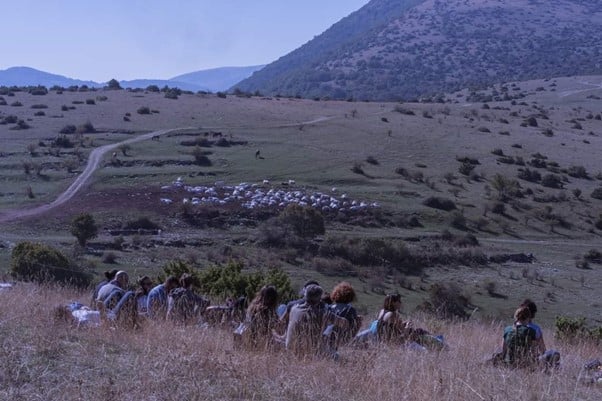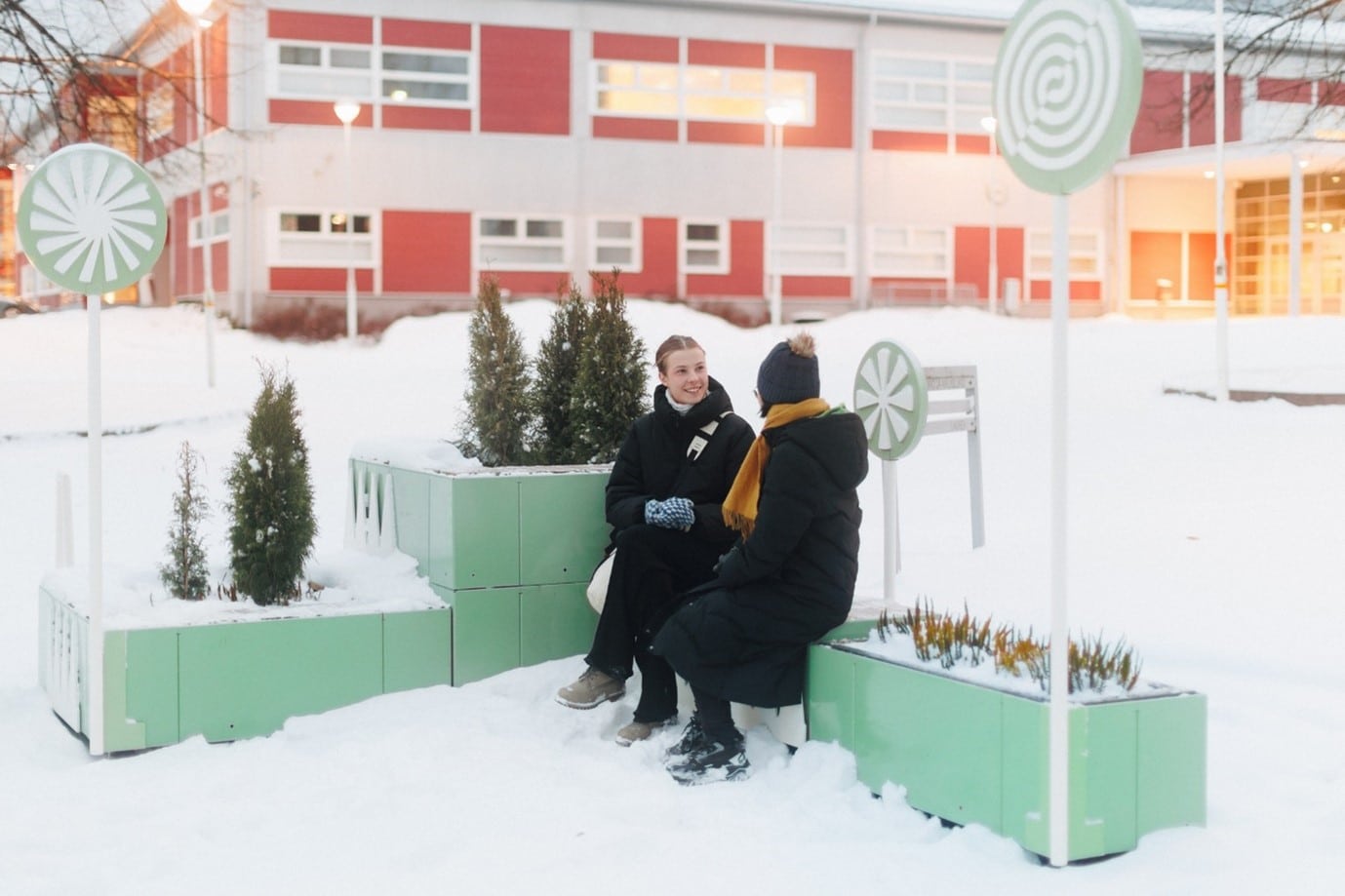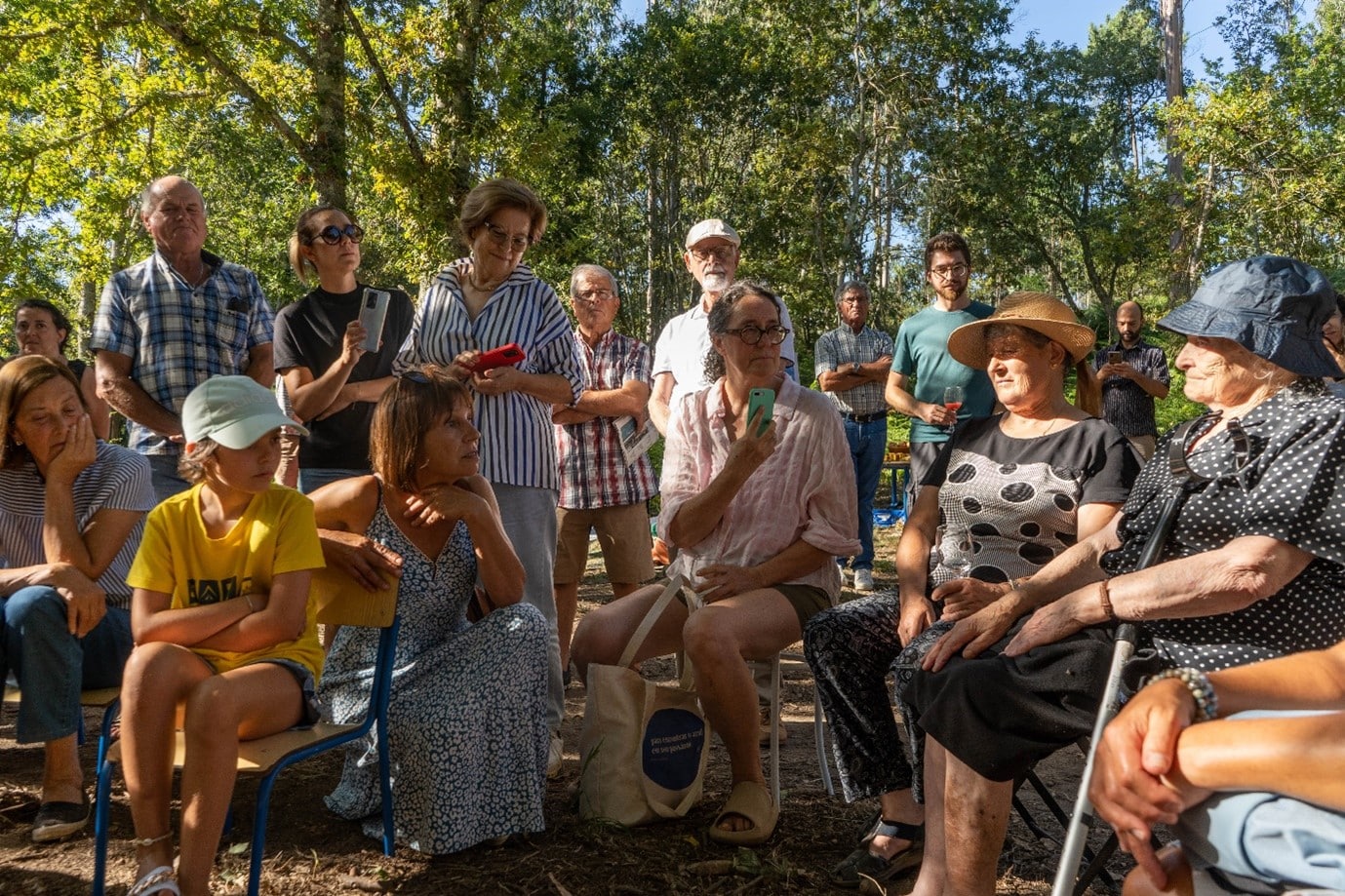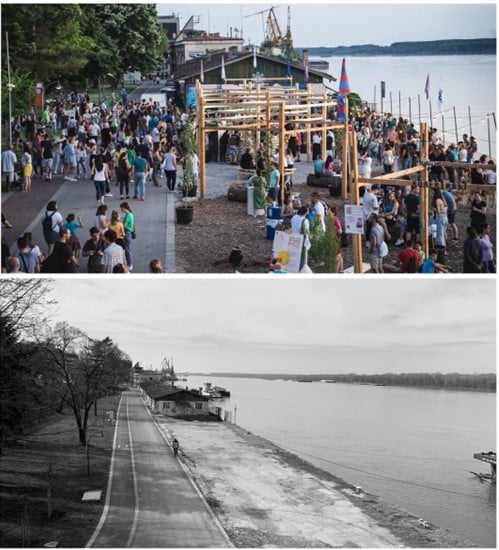The New European Bauhaus inspires co-creation and connection across Europe
In The News
15 Apr 2024
Launched in early 2021, the New European Bauhaus (NEB) is an EU-backed initiative that calls on all Europeans to shape a new future for the continent – built on the principles of sustainability, inclusivity and beauty. Along with our partners, EIT Food, EIT Manufacturing, and EIT Urban Mobility, we lead the EIT Community NEB, whose role is to support on-the-ground projects that embody the values of the NEB movement.
In 2023, we organised the latest edition of Connect NEB and Co-create NEB, two pioneering programmes that focus on citizen-generated solutions to the challenges facing cities, peri-urban and rural areas. While the Connect NEB programme engages citizens in relevant challenges within their local community, the Co-create NEB programme calls on local communities and public authorities to re-design public space. Now that the cohort have had an opportunity to implement their innovative ideas, we want to showcase their progress in the areas of sustainable heritage, community dialogue, and reimagined spaces.
Sustainability and heritage
In rural Latvia, the Aizpute Citizens’ Forum for the Preservation of Historical Heritage (ACFPHH) received funding to preserve the old town centre. By investing in the area, the project boosted collaboration between the municipality and the local community – encouraging to invest in historical building restoration. The project’s success extended beyond the town of Aizpute, garnering recognition from other regions and communities. There was even an acknowledgement from the President of Latvia, who highlighted its impact and value in inspiring similar initiatives nationwide.
On the small island of Zlarin, Croatia, the Design and Re-engagement of Public Water Sources (Drops) project addressed similar challenges created by rural exodus and overtourism. Through reviving the neglected water basin and restoring the island’s dry-stone walls, the project promoted sustainable tourism and the circular economy, while highlighting biodiversity and cultural heritage. Engaging local authorities and stakeholders emphasised the importance of supporting restoration projects and contributing to sustainable policies for the island. New maps produced for the project will help shape a new planning document that lays the groundwork for future environmental initiatives on Zlarin.

Slow tourism in the Monti Sibillini National Park, Italy.
Across the Adriatic Sea in Italy, the Frontignano Art Walks (FAW) project created podcasts and an audio documentary about the Monti Sibillini National Park. This initiative engaged the community in preserving cultural heritage while – like the Drops project – promoting a slower, environmentally friendly tourism model. By involving citizens directly in the co-design process, the project fostered a deeper understanding of the region’s identity and narratives. Furthermore, the project’s collaborative efforts with organisations like Cosa Accade Se Abitiamo (CASA) have advanced community development and resilience, particularly in earthquake-affected areas.
Listening to the community
Another project based in Italy, PLATEIA, addressed urban and social challenges in Rome’s Torpignattara neighbourhood by revitalising the Largo Perestrello, a neglected public space. Through participatory design and collaboration with local stakeholders, the project created a vibrant, green area that encourages community identity and connection with nature. The success in engaging diverse perspectives and priorities from local stakeholders influenced urban development strategies and promoted inclusivity and sustainability in the neighbourhood.
In a similar vein to PLATEIA, the Bring Nature Home (BNH) project transformed a largely forgotten space in a residential neighbourhood in Iași, Romania using biophilic design principles. By involving all age groups in the co-design process, the project inspired intergenerational dialogue and community collaboration. Furthermore, through partnerships with local government, landscape architects, artists, and civil society, BNH promoted sustainable practices through a replication handbook and paved the way for similar transformations in other Romanian cities.
Across the border in Bulgaria, the Soil Awareness and Diet Enhancement (SADE) project addressed ecological challenges in the Kuklen Industrial Park. By understanding soil vitality and implementing decontamination strategies, SADE promoted regional sustainable development and raised community awareness about vital ecosystems. The project’s collaboration with local stakeholders and the municipality has changed the planning culture of industrial parks, emphasising the importance of ecological considerations in industrial development and highlighting its potential to influence future development policies on a national and international scale.
To encourage cross-cultural dialogue within the community, the Laboratory for the New Neighbourhood (LNN) project established a participatory social hub within a large housing estate in Lublin, Poland. By engaging senior citizens, young people and refugees, the project created a vibrant space that promotes integration and collaboration. LNN’s participatory planning process redefined the neighbourhood’s identity and has inspired a bottom-up model of just transition and sustainable refurbishment in Lublin’s housing co-operative district.

Winter placemaking in Kerava, Finland.
The northernmost project of the cohort, Our City, in Kerava, Finland, aimed to create socially sustainable cities by involving young people in urban planning. Through collaborative efforts between citizens and designers from organisations such as Parkly, the project created a user-friendly public space that promotes community dialogue and inclusivity. Our City’s emphasis on youth engagement has influenced urban development strategies in the city of Kerava, underlining the importance of public spaces as welcoming places to people of all ages, at all times of the year.
Public space. Reimagined.
In the coastal town of Cascais, Portugal, the Cabra Figa Community Park project invited residents to co-design a green space within an area formerly dominated by industry. By empowering the community to play pivotal roles in managing their lived environment, the project encouraged local stewardship, intergenerational collaboration, and sustainability. Significantly, the creation of a safe, vibrant space has improved the quality of life for residents. As a result, Cabra Figa’s inclusive, transdisciplinary framework for citizen engagement serves as a prototype for similar initiatives hoping to regain a sense of belonging.

A community engagement session in Minante, Portugal.
Another organisation based in Portugal, the Prototyping a Natural and Cultural Heritage Experience project aimed to revitalise public space surrounding the historic Minante watermill in the north of the country. Once a thriving industrial site, the watermill played a significant role in the local economy, producing timber and flour while serving as a communal space. By engaging people in the co-creation and reimagining of the space, Minante promoted dialogue and shared ownership of cultural heritage. The project’s outcomes, including a booklet, photo exhibition, and scientific papers, ensures sustainable regeneration for future generations.
Given the rising temperatures across Europe, the Cool Co’s project addressed heatwave challenges in Budapest’s disadvantaged Józsefváros district. Through creating ‘cooling corners’ and corridors in collaboration with local residents, institutions, and NGOs, the project provided accessible heat shelters for vulnerable groups and promoted climate-friendly city strategies. Thermal measurements during on-site visits confirmed the project’s effectiveness, demonstrating significant reductions in land surface temperatures within the Cool Co area compared to nearby asphalt surfaces, and confirmed the value of sustainable urban design in mitigating the impact of climate change.

Bringing new life to neglected space along the Danube river in Bulgaria.
Finally, the Danube Design Lab for Collaborative City Planning (DDLCCP) aimed to engage young people in reimagining public space along the eponymous river in Ruse, Bulgaria. By bringing together a diverse range of community voices with civic organisations and local authorities, the project empowered young people to become agents of change and promote inclusive, vibrant spaces. Danube Design Lab’s positive feedback from local authorities, including participation by the Mayor of Ruse at the final event, as well as extensive media coverage, highlights its potential to influence urban development strategies and create greater community engagement in the future.
Thriving communities
All of the projects funded by the Connect NEB and Co-create NEB programmes represent diverse efforts to preserve heritage responsibly, enhance community engagement and promote participatory urban development across Europe. By providing a forum for collaboration between citizens, stakeholders, and policymakers, these initiatives all contribute to building sustainable, inclusive and beautiful places for people not only to live – but to thrive.
Curious to find out more? A brand-new cohort of Connect NEB and Co-create NEB projects have recently been selected and we’re looking forward to sharing more stories of collaboration and innovation later in the year.





